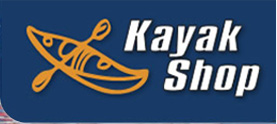 Loading... Please wait...
Loading... Please wait...Categories
- Home
- School Programs
- Risk Management
Risk Management
This list identifies risks likely to be inherent in any water sports activity (sea kayaking, surf ski, kayaking, canoeing, SUP). A program-specific risk management plan is completed as part of the Activity Plan and takes into account the specific conditions and participants of the program.
|
Risks |
Controls |
|---|---|
|
Wind strength and direction
|
Weather conditions are reviewed prior to the activity, and for multiday activities, in the days leading up to the departure. Assessment of students’ ability to cope with difficult wind conditions is considered. The activity is tailored to account for forecast wind conditions. Access points on the shoreline are identified as alternate launch / landing sites - local knowledge of the area. Distance to accessible shore is constantly monitored and a safe distance maintained. Wind strength and direction is constantly monitored.
|
|
Capsize and entanglement
|
Students take part in a capsize briefing on land, specific to the craft used Instructors closely supervision of craft in the event of a capsize. Instructors maintain suitable distance between craft so as to be available in the event of capsize. Rescue craft readily available at all times (Instructor craft).
|
|
Exposure to cold temperatures and wind
|
Students are briefed as to appropriate clothing to wear for the activity Students’ condition is under observation for the duration of the activity. Consideration is given to the appropriateness of water temperature and potential impact of the ambient temperature on the activity.
|
|
Exposure to sun and marine environment
|
Pre-activity information is provided to schools as to appropriate clothing. Students are briefed as to appropriate clothing to wear for the activity – hats, sunscreen and footwear are a requirement |
|
Submerged objects, rocks and sandbars
|
Monitor for hazards prior to student activity. (The surrounding environment will provide some indication of the likelihood of objects being encountered as will recent weather patterns.) Recent experience at the location and/or information from others with recent experience at the location are taken into account. Instructors have an understanding of recent local water and wind conditions. Communication signals are established – paddle signals and whistle
|
|
Access points in the activity location(s)
|
Access points on the shoreline are identified as alternate launch / landing sites. Rescue craft readily available at all times (Instructor craft). |
|
Other water users
|
Students are briefed as to hazards present in the vicinity of the activity, behaviour near boating access channels and giving way to other craft Communication signals are established – paddle signals and whistle
|

